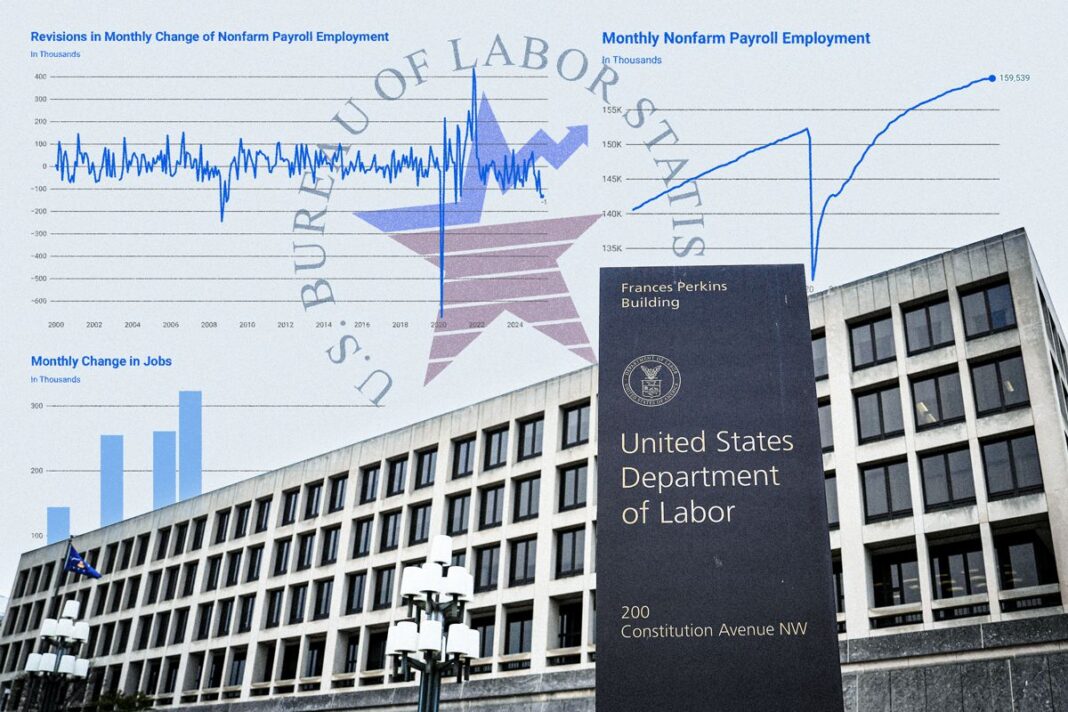Understanding how the Bureau of Labor Statistics recorded one of its largest jobs data revision in decades.
The Bureau of Labor Statistics has come under scrutiny since President Donald Trump called its July jobs report “rigged” and fired its commissioner, Erika McEntarfer.
“In my opinion, today’s jobs numbers were rigged in order to make the Republicans, and me, look bad,” Trump wrote in an Aug. 1 post on Truth Social.
Last month, the U.S. economy created 73,000 new jobs, below the consensus estimate of 115,000. Additionally, the bureau revised down its May and June readings by a combined 258,000, the largest two-month revision since 1979, outside the pandemic period.
While its data collection efforts were criticized during the previous administration, Trump’s latest complaints have placed a renewed focus on the federal agency’s statistical-gathering methods.
What Is the Bureau of Labor Statistics?
Founded in 1884, the Bureau of Labor Statistics functions as an independent source of economic data under the Department of Labor. The agency is overseen by the Labor Secretary but managed day-to-day by a Senate-confirmed commissioner.
Today, the approximately 2,300-person bureau gathers data and publishes reports on crucial economic issues, including payrolls, unemployment, wages, productivity, and inflation.
Economists and policymakers have consistently emphasized the federal agency’s role in providing data that helps the public understand the overall health of the broader economy.
“Good data helps not just the Fed, it helps the government, but also helps the private sector,” Federal Reserve Chair Jerome Powell said at a press conference on July 30.
“It’s very hard to accurately capture in real time the output of a $20-plus trillion economy, and the United States has been a leader in that for 100 years, and we really need to continue that, in my view.”
Collecting Employment Data
On the first Friday of every month at 8:30 a.m., the Bureau of Labor Statistics releases the Non-Farm Payrolls report, officially known as the Employment Situation Summary. The employment figures are gathered through two primary surveys.
By Andrew Moran








